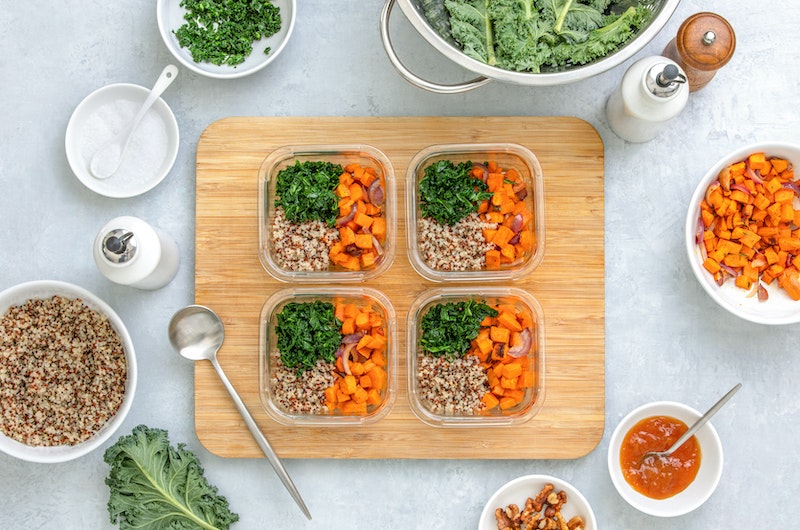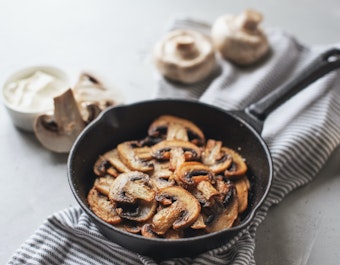You listen to your hunger cues, cook at home most nights, and you’ve never met a veggie you weren’t willing to fork. You’re golden, right? Well, you’re certainly doing well — high five! But if you dig deep, you’ll probably find at least one or two habits that could use some tweaking. That doesn’t mean you’re failing; it means a small change could help you feel even better.
1. Agonizing over every treat
Sure, a runaway sweet tooth might wreak havoc on your health goals. Eating too much added sugar can put you at higher risk for obesity, Type 2 diabetes, and heart disease. But having an all-or-nothing mentality can create feelings of deprivation and cause you to spiral after even a tiny slip-up, says Dawn Jackson Blatner, RDN, a Chicago-based registered dietitian and author of “The Superfood Swap.”
Besides, she says, “It’s a mistake to think that dessert has to mean reaching for a calorie bomb that leaves you in a sugar coma.” Instead of declaring all desserts off limits forever, prioritize those times that really matter (say, sharing in a friend’s birthday cake), and lean into less sugary treats that can still satisfy your cravings, like a small handful of chocolate-covered almonds or baked cinnamon apples.
2. Snacking exclusively on crackers and other pantry staples
We’re not about to knock a whole-grain cracker or a dry roasted chickpea. But keep in mind that healthy eating is about balance, and loading up exclusively on shelf-stable eats can mean you’re taking in more sodium than you realize. About 90% of Americans eat too much salt, according to the CDC, and doing so can raise your blood pressure, putting you at higher risk of heart disease and stroke.
When you can, expand your between-meal options to include more fresh options. “Yogurt or string cheese is always a great idea,” says Barbara Rolls, PhD, a satiety expert and professor at Penn State. But if refrigeration isn’t an option, pack sturdier fruits. Delicate berries or drippy watermelon may not seem like a great out-and-about option, but an apple or banana is about as sturdy as a granola bar — and packs plenty of nutrients, with none of the added sodium.
3. Watching what you eat — but not what you drink
Have you given much thought to how many calories or how much sugar you drink, on any given day? Even seemingly healthy options, like coconut water or decaf soy lattes, can quickly add up if you’re not paying attention. And while it may seem like slurping or crunching shouldn’t make a big difference, your body doesn’t feel the same amount of satiety, or fullness, when you drink, says Rolls.
If sipping a beverage brings you serious bliss, know that you don’t have to go all water all the time. Cut out the drinks that don’t feel worth it — and know that doing so can bring real benefits. A 2016 study found that when people replaced even one sugar-sweetened beverage with a glass of water, the swap reduced the calories coming from drinks from 17% of their overall diet to 11%.
4. Putting meal prep on repeat
Meal prep can set you up for serious success — slashing your weeknight cooking times, making brown-bag lunches a no-brainer, and putting healthy breakfast on auto-pilot. But if you put the exact same menu on repeat (say, making a week’s worth of identical lunch salads at once or cooking a giant pot of chili to get you through the next five nights), you might quickly find yourself bored...and craving takeout simply for the variety, says Tammy Lakatos Shames, RDN, a New York-based registered dietitian with her sister, Lyssie Lakatos, RDN.
Don’t worry, keeping your taste buds tantalized doesn’t have to mean seven entirely different dinners every single week. You can amp up variety with a few simple tricks: Try repurposing leftovers (so the roast chicken from Monday becomes chicken tacos, say, on Tuesday), swapping side dishes, or freezing individual portions so you can enjoy that big batch of minestrone over several weeks instead of back-to-back nights.
5. Embracing gluten-free everything
For people who have celiac disease (an autoimmune condition) or a gluten intolerance, steering clear of the protein found in wheat, rye, and barley is a must. But unless you have a health reason, “Gluten-free foods aren’t necessarily better for you,” says Lakatos Shames. That’s especially true for processed foods, like breads, bars, and pastas, which may eschew whole-grain wheat for substitutes like rice flour or corn.
Some gluten-free options are both scrumptious and healthy, like the new trend of bean-based pastas that deliver an extra oomph of filling fiber and protein. But you can’t make a blanket rule that gluten-free is the default winner. The only way to know which option is best for you is to look at the label, says Lakatos Shames.
BRIGID SWEENEY
Rally Health






